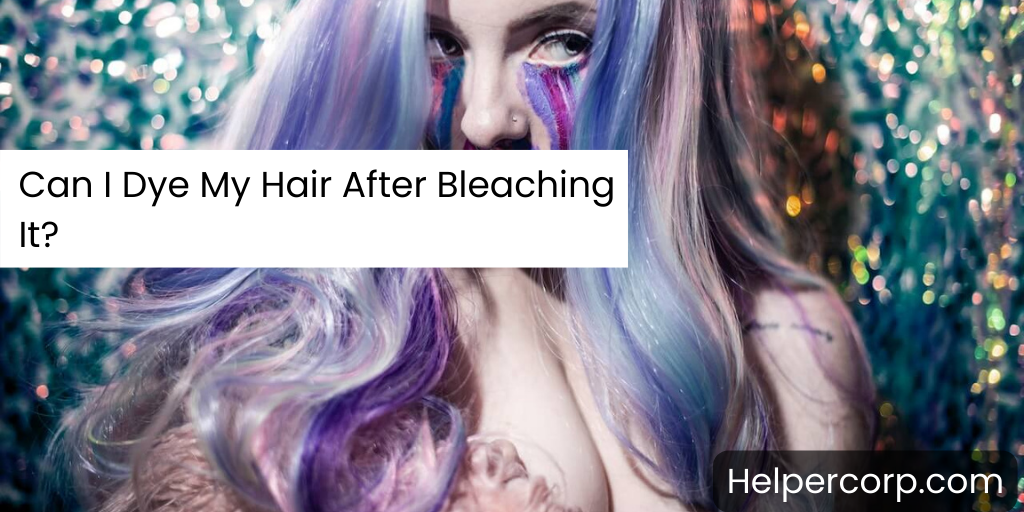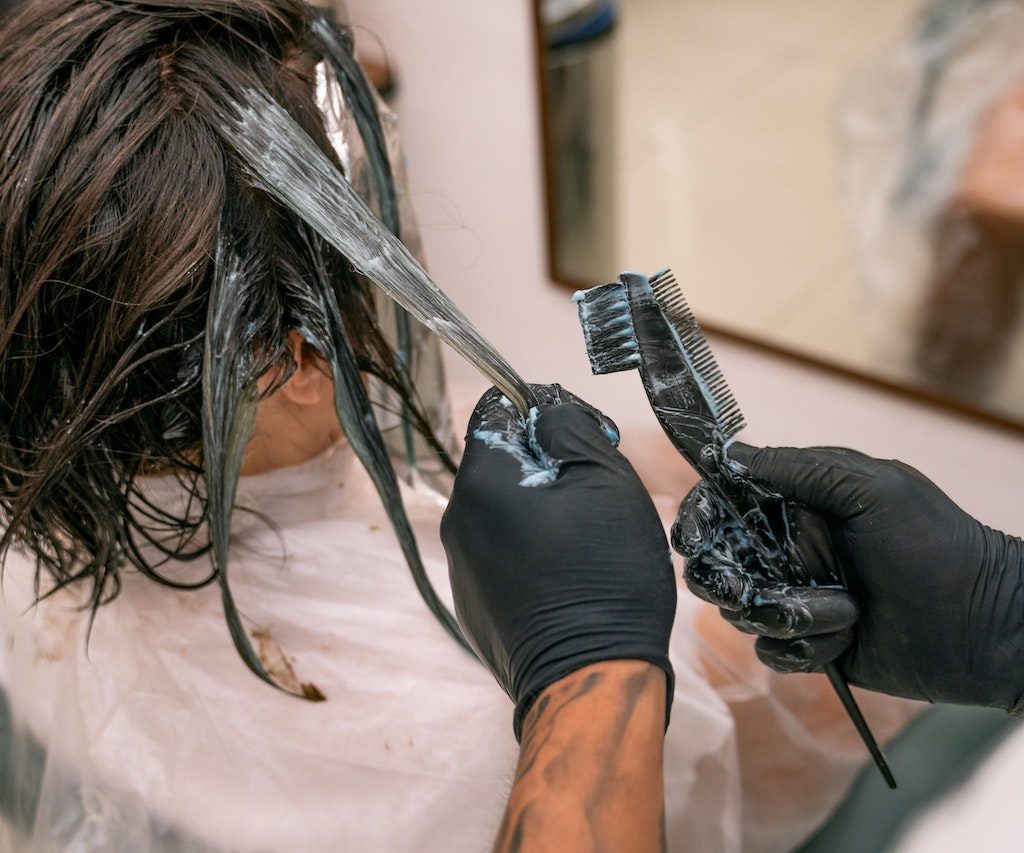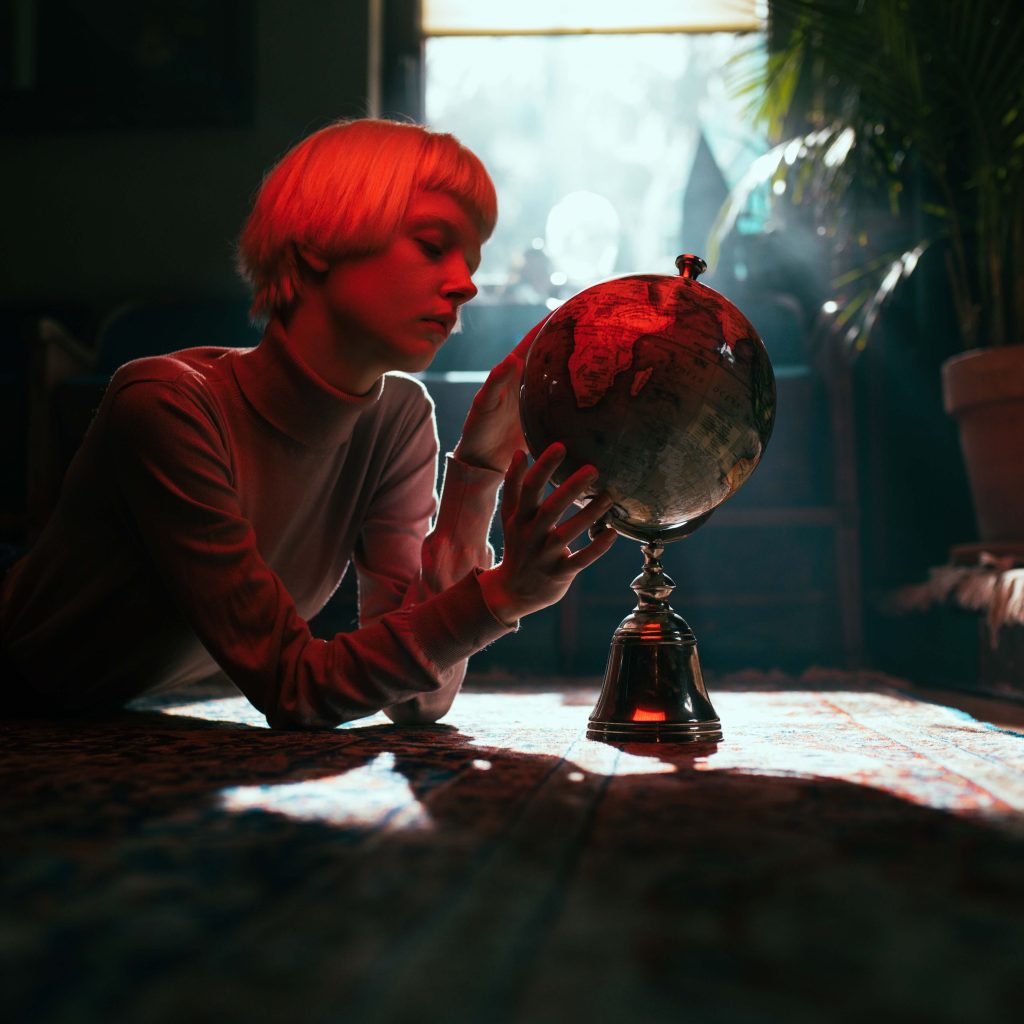
Yes, you may color your hair after bleaching it. The color must be carefully picked to match the range of what you bleached. Cold water is recommended for healthy hair. The semi-permanent color is mild on hair and may be used forever. It also gives gloss to the hair.
Table of Contents
- 1. How often have you bleached your hair?
- 2. What is your current hair condition?
- 3. Do You Suffer From Hair Loss?
- 4. When did you last dye your hair?
- 5. What is your current motivation?
- How Do You Prepare Bleached Hair for Dye?
- Use a soft towel to dry your hair:
- How Do You Dye Bleached Hair?
- Ingredients Of Natural Hair Bleach And Natural Hair Dye
- Determine What Colour You Want To Dye Your Hair
- Take Your Hair’s Base Color Into Account
- Examine the hair in old photographs.
- Use a deep conditioner to condition your hair beforehand.
- FAQs
Things to Consider Before Using Bleach and Dye on the Same Day
Before choosing to bleach and dye your hair on the same day, consider the following questions to avoid damaging and drying your hair. To begin, ask yourself the following questions to ensure consistency.
1. How often have you bleached your hair?
Bleaching your hair excessively might injure it and cause major hair loss. Because of the frequency with which you bleach your hair, you may become prone to a variety of problems. Hair that comes into contact with these substances on a regular basis may experience severe hair loss.
2. What is your current hair condition?
Avoid chemical contact with your hair if you are experiencing major hair loss or atypical hair loss. These chemicals may be harsh on the hair roots, causing additional hair problems.
3. Do You Suffer From Hair Loss?
Hair loss is a problem that many women face. If you have a problem with hair loss, hairdressers do not advocate bleaching your hair. Maybe you can do it later, once your scalp has firmed up your hair.
4. When did you last dye your hair?
If you already have deep, glossy color in your hair, it will be quite heavy with the color. So, avoid using permanent colors; it is dangerous.
5. What is your current motivation?
You should intend to use the original hue to enhance your natural hair. You do not need to colour your hair if you want smooth white hair. It is entirely up to you and depends on your own tastes.

How Do You Prepare Bleached Hair for Dye?
Ascertain that your hair is healthy and free of hair loss.
1. Straight Hair:
Avoid using damp hair; instead, make sure it is thoroughly dry. After bleaching, you must wait at least a week. However, if you are in a hurry, you may use your hairdryer to dry it. Hairdryers are generally not recommended since they might harm your hair.
2. Select a Color:
Color selection is very important. It is entirely up to you to pick the color of your choosing. The stylists would advise you to choose a temporary color that has very few chemicals. You must use caution while selecting a hue that will mix with your bleach. Furthermore, the natural hair color will blend nicely with bleach.
3. Use It:
Always apply color from the root since it absorbs more than the top. After finishing the root concentration, go on to the center and finally the scalp. Be cautious while following a lineup.
4. Make Use Of A Wide Tooth Comb:
It is best to distribute the color using a brush or comb to get a perfect mix and soften your hair with the new color. This results in smooth, silky hair that is free of frizz.
5. Wait a little while:
Patience is required to keep the hair in the proper manner. Wait for 5 to 8 minutes after applying the color to let the color spread organically. After 5 minutes, use a brush or comb, but first, make sure that your hair is not clumped together.
6. Shampoo Your Hair:
Wash your hair gently once with shampoo. Use conditioners to improve nutrition. The shampoo might cause harm to recently colored hair.
Use a soft towel to dry your hair:
Towels are often rough; they may pull off weak hair when it is damp, timid, and delicate. The smooth texture is achieved by using a soft and silky towel. When you dry your hair, it does not get damaged. Many people like to dry their hair with a hairdryer. It is a superior way, but the biggest downside is the heat. It may be more damaging to the hair than towels. Soft towels are often recommended.
Also Read: Can Albino People Dye Their Hair? Honest Answer
Assume you have plenty of time and are not in a rush. It is advised not to color immediately after a day of bleaching. In general, a week is necessary, but if you allow a month as a break, it is largely okay. It will help the hair blend nicely with the color you are applying. It is up to the individual.
How Do You Dye Bleached Hair?
The dye and bleach components are listed in the table below. The table will assist you in selecting the ideal product that nourishes your hair without causing harm and is used to achieve a perfect blend with a faultless appearance that is more appealing and natural. Hair color and hair bleach ingredients include chemical components.
| Bleach ingredients | Dye ingredients |
| Sodium Persulfate | Ammonia |
| Melamine Peroxide | Peroxide |
| Magnesium Peroxide | Diaminobenzene |
| Magnesium Peroxide | Toluene 2 |
| Sodium Metasilicate | Diamine5 |
| Phenylenediamine | Hydrogen peroxide |
| Potassium Persulfate | Phenylenediamine |
| Ammonium Persulfate | Lead Acetate |
Ingredients Of Natural Hair Bleach And Natural Hair Dye
| Bleach ingredients | Dye ingredients |
| Lemon juice | Carrot juice |
| Honey | Beetroot juice |
| Vinegar | Lemon juice |
| Olive oil | Henna |
| Cinnamon | Coffee |
| Henna | Chamomile tea |
| Chamomile tea | Sage |
| Rhubarb |
Determine What Colour You Want To Dye Your Hair
After bleaching, it is time to decide what shade of color to give your hair. Follow fundamental guidelines when choosing the color to get the ideal color harmony. The hydrogen peroxide enters the hair strand due to disruption of the cuticle layers caused by bleaching, which limits the ability of the color to mix.
The hydrogen peroxide in the bleach changes the natural shade of the hair to yellow, white, or reddish. The likelihood of color change depends on the kind of hair color and how long has passed after bleaching. The color of your choice should then be selected and applied. However, when hair is dyed before bleaching, it often absorbs the color effectively.
You have a number of natural color options, including red, blond, and brown-black. In addition to these hues, you may choose from a variety of vivid colors, including cherry red, blue, purple, and pink. Always pick between 1 and 3 shades lighter or darker than your actual hair color to get a natural mix.
Take Your Hair’s Base Color Into Account
Select the base color you want to use after bleaching. For a decent appearance, the two colors must combine and mix effectively. When the two hues merge nicely, you can make a mistake in color choice. It changes your color. For instance, green hair occurs if the base color is blue and the bleach color is yellow. Better outcomes may be obtained by using a violet base color dye on yellow-colored, bleached hair.
Using the color wheel is generally advised since it will help you navigate better. Look up websites online to see which colors the manufacturing firm should employ. The colors should be listed in a palette with warm, neutral, and cold tones. The various parts of the hair color kit are also available in a beauty supply shop. They will highlight the proper selection of the color blend’s greatest foundation hues, such as blue, blue-violet, violet-red, and red, among others. You will be able to choose the perfect color thanks to these color schemes. You will not wind up picking the incorrect color.
Examine the hair in old photographs.
You can determine the origin of your hair color from images of you as a youngster. The main benefit of this is that you can predict how your hair will respond to certain hues. If the color is warm in nature, such as honey blonde or a similar shade, you may choose it. If the color is a more relaxed color mix, such as blonde or brunette, you can choose it based on your preference and hair color. Your decision may also be influenced by the environment or your place of employment. Most organizations discourage employees from wearing bright, unnatural colors because it makes them seem unprofessional.

Use a deep conditioner to condition your hair beforehand.
Before using bleach, add conditioner. The conditioner will better nourish your hair for the best color combination. The conditioner provides hydration for healthy hair. Although bleach may be damaging to hair and is tough on it, the water in your hair will make you more resistant to bleach’s chemicals.
There are various bleaches on the market, with prices ranging from $5 to $8 at the lowest end to $30+ at the most. There is a large selection of conditioners available that are manufactured with natural substances; the main component of these conditioners is food. The fundamental components are
- Bananas
- Avocado
- Mayonnaise
- Yogurt
- Eggs
- Coconut oil and other nourishing food materials.
These methods will assist you in selecting organic items that offer nutrients to the hair root and assure you of wetness and improved nutrition. It reduces frizz and aids in the restoration of the hair’s natural form. Preconditioning is often recommended for a better color mix and healthier coloring.
FAQs
Does Food Coloring Work for Hair Dyeing?
The most suggested method is to apply dye using food coloring since food colors are not too harsh when applied to the hair. There is a substantially lower risk of hair damage, and the delicate and natural procedure of applying color to the hair results in a more appealing appearance.
Also Read: What Is The Average Height Of An Asian Man?
Can color my hair hurt it?
When you use natural, nontoxic hair dye, coloring your hair will not cause substantial damage. However, bleaching may cause further harm since it bleaches so forcefully, and the delicate hair roots might be destroyed owing to the numerous chemicals involved in it.
Should I consider the color’s basis before selecting a dye?
Yes, when selecting a dye, you should examine the color’s basis. It will help you produce better results.
